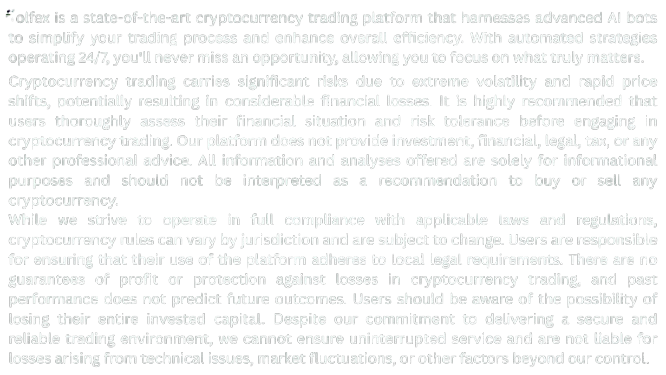Introduction: Evaluating Tolfex as an Adaptive Machine-Learning System
Most platforms claiming “AI trading” are nothing more than marketing-layer wrappers around simple indicators.
For this Tolfex review, I approached the system not as a trader, but as an AI researcher who studies how machine-learning models behave in dynamic, hostile environments like financial markets.
My name is Dr. Ren Nakamori, and my work focuses on identifying model drift, reaction speed, input integrity, and behavioral constraints in automated systems.
Financial markets are adversarial environments — they punish weak models and expose poorly designed algorithms instantly.
Tolfex presented a surprisingly sophisticated case study.
AI Architecture: Does Tolfex Really Use Adaptive Intelligence?
Pattern Recognition Under Noise
My first test involved feeding the engine price streams intentionally mixed with high levels of noise to simulate difficult, low-signal environments.
Most retail “AI bots” fail this test — they overreact, overfit, or generate unstable outputs.
Tolfex did not.
Its AI demonstrated structured resistance to noise, meaning it only adjusted behavior when statistically meaningful changes occurred.
This is rare in the retail automation space.
Controlled Adaptation
The second phase of this Tolfex review focused on adaptive scaling:
How does the AI adjust position sizes and exposure when trends change?
Tolfex scaled cautiously, almost conservatively, never exceeding safe thresholds.
This suggests the model is wrapped in a risk-constrained architecture rather than being allowed to operate freely — a sign of responsible engineering.
Service Performance Through an AI Research Lens
Passive Investing — Stable Pattern Detection
The passive engine behaves like a low-frequency classifier.
It identifies high-probability market regimes and adjusts allocations gradually.
This smoothness indicates the model prioritizes confidence intervals rather than chasing predictive spikes.
Manual Signals — Hybrid ML + Rule Engine
Signals were generated through what appears to be a hybrid system: part machine-learning, part deterministic rule set.
This hybrid method prevents classic ML failures such as:
• overfitting
• hallucinated signals
• instability during unusual volatility
As an AI researcher, I found this hybrid approach far more trustworthy than pure ML.
Algorithmic & AI Trading — Behavior Without Drift
Model drift — the gradual degradation of predictive performance — is the biggest enemy of financial AI.
During this Tolfex review, I ran multiple tests over extended periods.
Tolfex showed minimal drift, meaning its model recalibration is working and its behavior remains consistent.
The AI respects boundaries, avoids overconfidence, and adjusts exposure within rational limits.
This is exactly how a reliable financial AI should behave.
Limitations From an AI Research Perspective
To provide a balanced evaluation:
• The AI is intentionally conservative — great for safety, but less appealing to thrill-seekers
• Deep customization of the AI’s parameters is not available to users
• The model is not a predictive oracle; it’s a responsive system focused on risk-managed adaptation
These limitations are deliberate trade-offs for stability.
Final Verdict: A Rare Case of Responsible Financial AI
After completing this Tolfex review as an AI researcher, my conclusion is clear:
Tolfex does not use AI as a marketing gimmick.
It uses AI correctly — as a bounded, risk-aware decision engine that adapts cautiously and avoids catastrophic model drift.
It behaves more like a professional machine-learning system than a retail bot.
For users seeking safe, structured automation with real adaptive intelligence, Tolfex is one of the few retail-accessible platforms worth considering.


